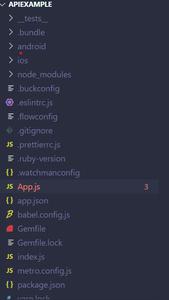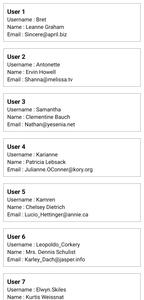How to load data from the server-side in React Native ?
Last Updated :
23 May, 2022
In this article, we will see how to integrate the React Native app with backend code using fetch API. Networking is an inherently asynchronous operation.
React Native Fetch: Fetch is the best Promise-based networking API in JavaScript. The fetch allows you to make network requests similar to XMLHttpRequest(XHR). The fetch() method only has one mandatory argument: the URL of the resource you wish to fetch. To integrate React Native with fetch API, define a resource and pass that URI to the fetch() function, which returns the data based on the request and displays that data via the View component.
Making requests to server side: In order to fetch content from an arbitrary URL, you can pass the URL to fetch:
fetch('https://yourwebsite.com/yourdata.json');
Fetch also takes an optional second argument that allows you to customize the HTTP request. You may want to specify additional headers, or make a POST request:
fetch('https://server-url/<path>/', {
method: 'POST',
headers: {
Accept: 'application/json',
'Content-Type': 'application/json'
},
body: JSON.stringify({
firstData: 'yourValue',
secondData: 'yourOtherValue'
})
});
Example: In this example we will see how to load data from server URL and shown to the Flat list of react native in 3 simple steps. For the data, we have used the API endpoint from http://jsonplaceholder.typicode.com/users we have created the component in App.js.
Step 1: First we need to create a simple react native app.
react-native init apiExample
Or using Expo,
expo init apiExample
Here apiExample is the project name. If you don’t have react-native, first you need to install react native using npm or expo. You can use this https://www.geeksforgeeks.org/introduction-react-native/ documentation to install and setup the react-native.
Step 2: Change your directory and entering to App.js file.
cd apiExample
Project structure:

project structure
Step 3: Write code in App.js to fetch data from API and we are using fetch function.
Javascript
import React, { useEffect, useState } from "react";
import {View, Text, FlatList} from 'react-native';
export default function App(){
const [users,setUsers] = useState([]);
useEffect(()=>{
fetchData()
},[]);
const fetchData = () => {
.then(response => response.json())
.then(jsonResponse => setUsers(jsonResponse))
.catch(error => console.log(error))
};
const renderUser = ({item}) => {
return (
<View style={{margin:10,borderWidth:0.5,padding:10}}>
<Text style={{color:"black",fontSize:16,fontWeight:"bold"}}>
User {item.id}
</Text>
<Text style={{color:"black"}}>Username : {item.username}</Text>
<Text style={{color:"black"}}>Name : {item.name}</Text>
<Text style={{color:"black"}}>Email : {item.email}</Text>
</View>
)
}
return (
<View style={{flex:1,backgroundColor:"white"}}>
<FlatList
data={users}
renderItem={renderUser}
keyExtractor={(item,index) => index.toString()}
/>
</View>
)
}
|
Step to run application: After write the code start the app to see the output. To start the app,
react-native run android
For ios,
react-native run ios
Output:

output
Share your thoughts in the comments
Please Login to comment...